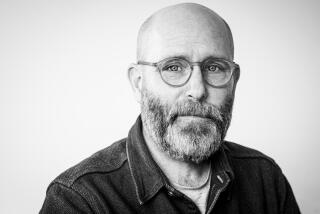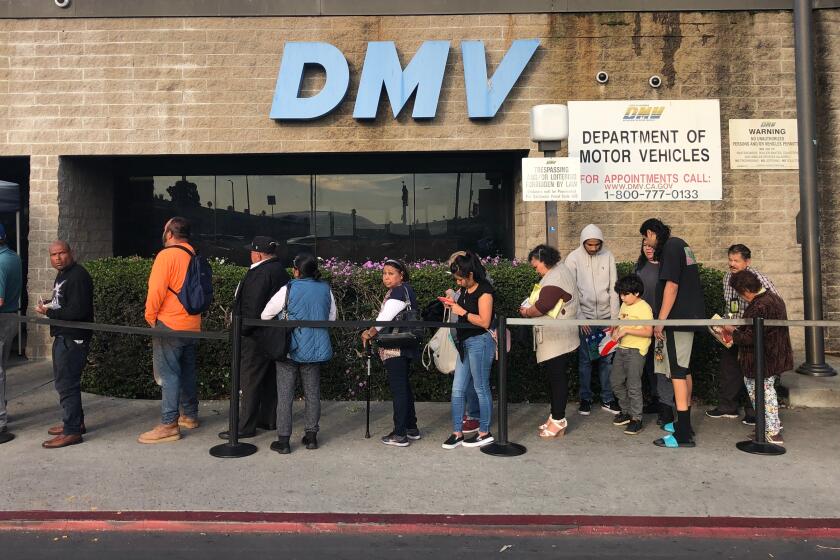He photographed L.A. protests ‘almost as an afterthought.’ Now his pictures are part of history
- Share via
As protests against police brutality spread across Los Angeles this summer, Tommy Oliver had a gut feeling that he had to be there. His wife was skeptical — COVID-19 was everywhere, they have three kids — but he just knew he had to go, he said.
As he headed out, the Los Angeles-based filmmaker — known in part for his “Black Love” docu-series on the Oprah Winfrey Network — grabbed his camera “almost as an afterthought,” he said, just in case he wanted to snap a few pictures.
Now, dozens of his images are to be preserved as part of history.
After receiving widespread attention on social media and landing him on the “Today” show, Oliver’s images — in black and white and in color, of massive crowds but also individual characters — were noticed by curators at the Smithsonian National Museum of African American History & Culture on the National Mall in Washington.
Aaron Bryant, the museum’s curator of photography, visual culture and contemporary history, had been thinking about how best to document the protest movement that swept the nation after the death of George Floyd at the hands of Minneapolis police in May.
“How do these protests represent a historical moment, a historical shift?” he wondered.
Oliver’s images struck him as providing part of the answer.
“Photographers, the really good ones, particularly in frenetic moments like this, are able to really capture the epic nature of the moment in a really emotional way, but also in a spatial way,” Bryant said.
Oliver’s images, he said, “were epic — almost like Greek tragedy.”
The two men connected, and Bryant broached the topic of acquiring the images for the museum. Oliver said he’d donate them all at no charge.
“He’s agreed that we can select whatever we want,” Bryant said.
There are images of individual protesters, and of individual police officers. There are images of protesters seated in the middle of a street, and of thousands of them filling Hollywood Boulevard as far as the eye can see. There are political signs, celebrities such as Kendrick Sampson and Michael B. Jordan marching and speaking, and people wearing masks to protect against the coronavirus — and not wearing them.
Smoke in one image hints at the unrest that broke out at some of the summer protests, but the images largely focus on the broader, underlying reality: community members standing up against police brutality. Many of the images are from the massive Hollywood demonstration — for LGBTQ and other Black lives — that came off without a hitch.
The faces of protesters are clear in some images, and blur into the crowd in others. Always, there is humanity reflected back at the viewer.
“It’s always about the people and the emotion and the connectivity, and not about the tableau,” Oliver said. “These are people who are literally risking their health or risking their lives, because 200,000-plus people have died from COVID, and yet people are out protesting. It’s individuals who are choosing that, to be out there.
“I see families, I see friends, I see parents.”
The images still have to be presented to and approved by a Smithsonian collections committee, but Bryant said he was confident they’d make the cut.
Oliver, 36, who co-created “Black Love” with his wife, Codie Elaine Oliver, has had his fair share of professional successes. From humble roots in Philadelphia he got to Carnegie Mellon, and in his 20s, he formed a tech firm. He has since produced several films, is the writer, director and producer of the upcoming HBO documentary “40 Years a Prisoner,” and this year was invited to become a member of the Academy of Motion Picture Arts and Sciences.
Still, he’s never really considered himself a photographer, and the idea that photographs he’s taken of street protests over violent policing are now headed to one of the most venerated museums in the world to be preserved for future generations is “mind-blowing,” he said.
“I grew up in the hood in Philly, and I’ve had so many interactions with police — or friends, family have — and it’s such a weird thing. It’s something that informed the photos in a weird way,” Oliver said.
Asked what he hoped someone in a hundred years might take away from his images, Oliver let out his breath.
“That’s one of the craziest questions I’ve ever been asked in my life,” he said.
“I would hope that the photos are a way to see the people who chose to stand up, who chose to fight back against police brutality and systemic racism,” he said. “Who those people were, and how many there were, but specifically the who — who chose to be there — and the power of the individual.”
More to Read
Sign up for Essential California
The most important California stories and recommendations in your inbox every morning.
You may occasionally receive promotional content from the Los Angeles Times.











